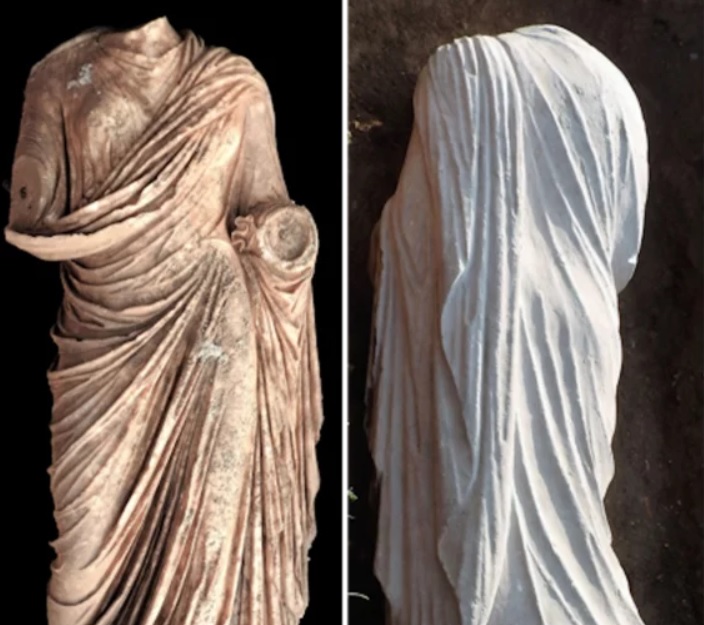
A marble statue of a woman which may depict Hygeia, the wife or daughter of the ancient Greek god Asclepius, the god of medicine, was just found at the site of ancient Epidaurus, a center for healing in ancient times.
The graceful statue, which is missing its arms and head, is still thought by archaeologists to be in excellent condition. The spectacular find was made on December 16 as researchers continued their excavations in the marketplace of the ancient city where people came for healing from various maladies.
The life-size statue is thought to depict Hygeia, the goddess of health and cleanliness, who according to Greek mythology was either the wife daughter of Asclepius, the god of healing; she is shown as a married woman, archaeologists say, noting her stance with a raised right arm, typical of how married women are portrayed in ancient Greek sculpture.
Marble statue likely depicts goddess of health, cleanliness Hygeia
Although the archaeological excavations for 2021 were already over for the year, the recent hard rains in the area scoured away soil from the back of the statue, miraculously bringing it to light. Alkisti Papadimitriou, the Head of the Ephorate of Argolida, decided to excavate her immediately.
The marble statue, who is shown wearing a tunic and a robe, has her robe fastened over her left shoulder and arm, from where it hung in rich folds. One end of it passes behind her back and under her right arm and is then thrown back and sideways, over her left shoulder.
The lifting of the robe, showing that her original right hand directed outward and upward was typical of how married women were depicted in antiquity; this is also a common way to depict Hygeia. Archaeologists’ initial assessment places the work in imperial Roman times.
The statue has now been transferred to a warehouse in the Asclepieion for storage, cleaning, maintenance while it is being further researched.
Systematic excavations have been carried out at the site since 2015 by a research team from the University of Athens with the financial support of the Ioannis S. Latsis Public Benefit Foundation.
Near the theater of the ancient city, which is referred to as the “small theater of Epidaurus” today, which was located in the ancient market, an important building was also discovered which is thought to have been constructed in the fourth century BC. During Roman times, it acquired a new form, however, with the addition of a portico on the western side and a vaulted building on its north side.
Evidence has emerged that leads experts to believe that this complex is indeed connected to Epidaurus’ temple dedicated to Asclepius, the ancient Greek god of healing, which was mentioned by the historian Pausanias.
See all the latest news from Greece and the world at Greekreporter.com. Contact our newsroom to report an update or send your story, photos and videos. Follow GR on Google News and subscribe here to our daily email!



